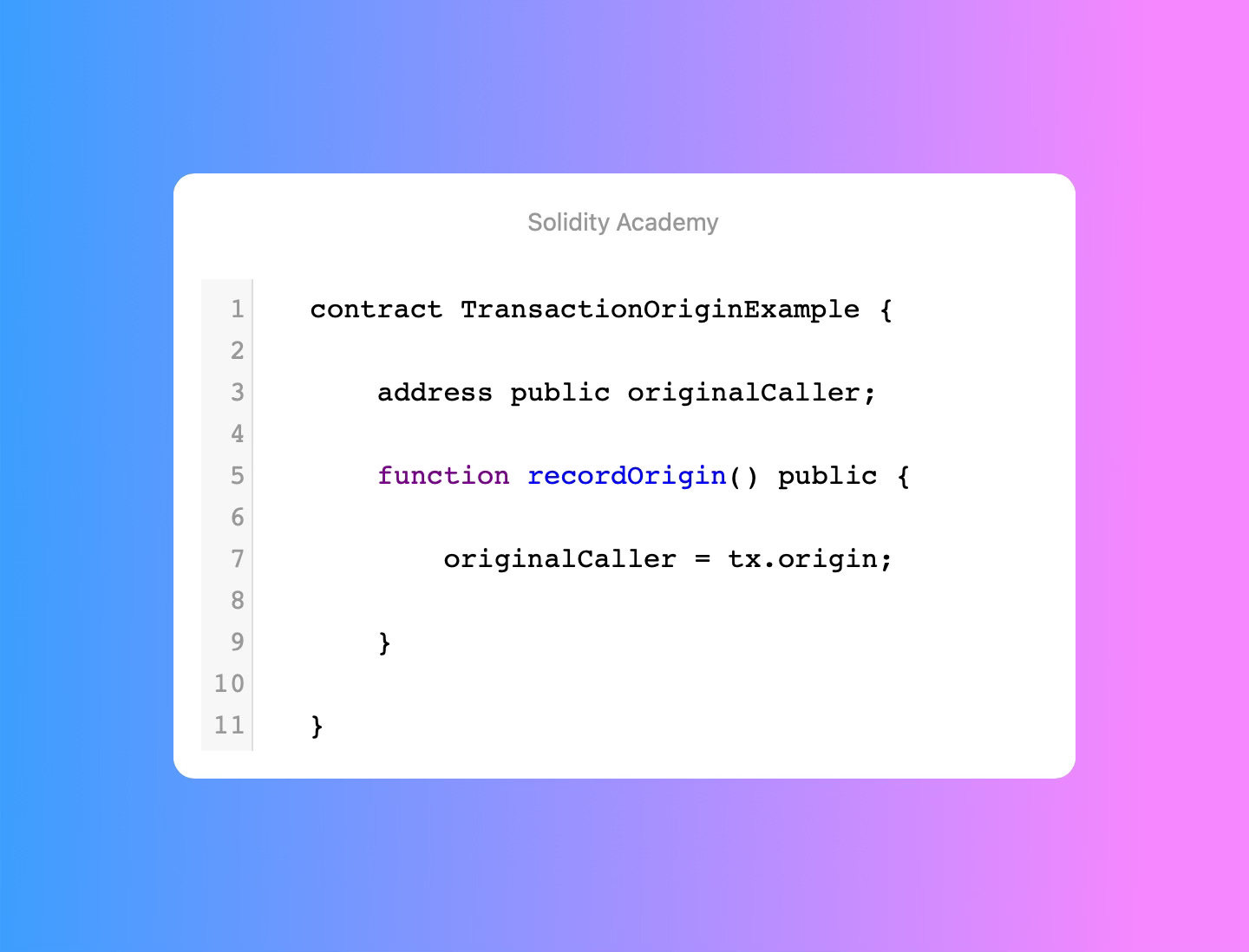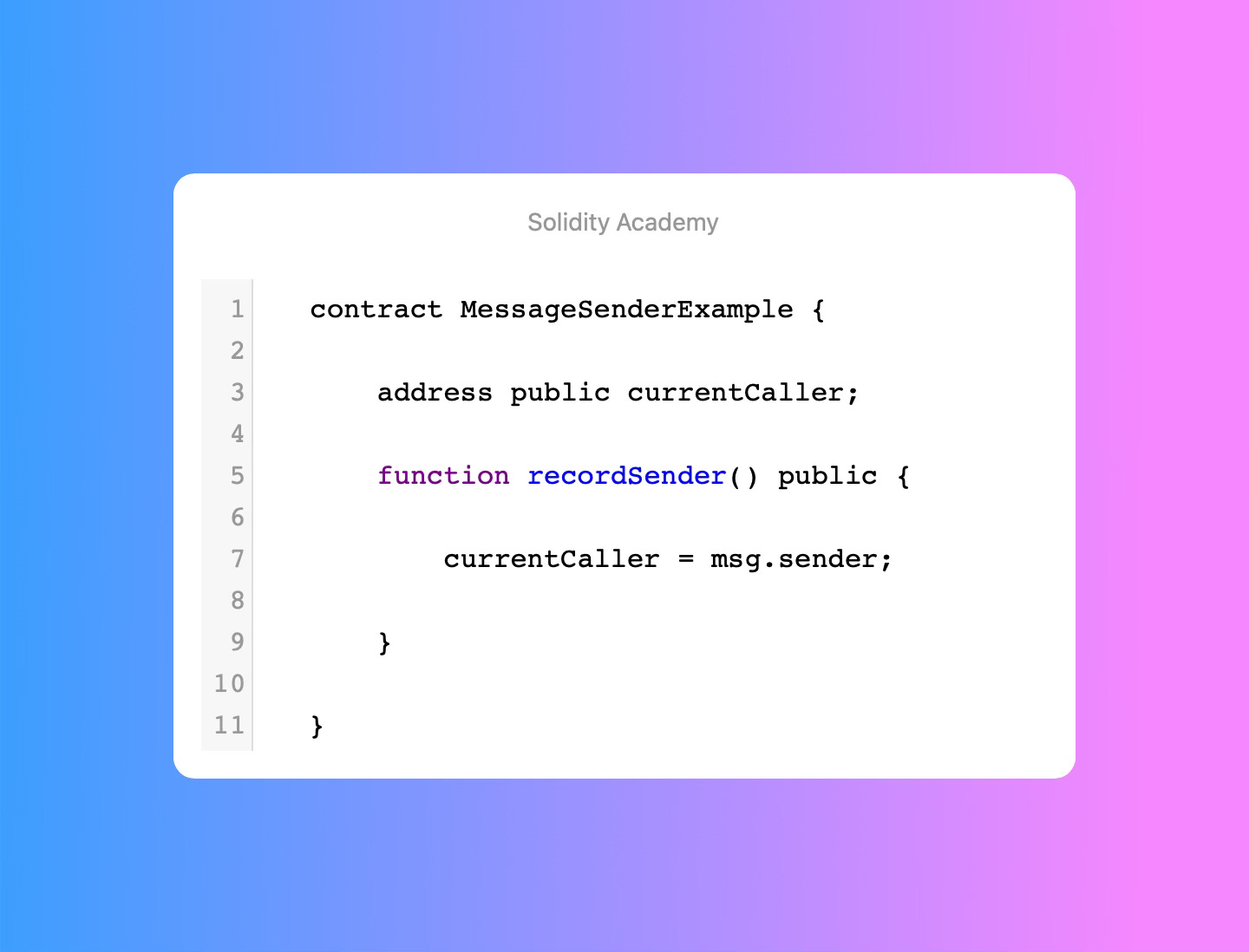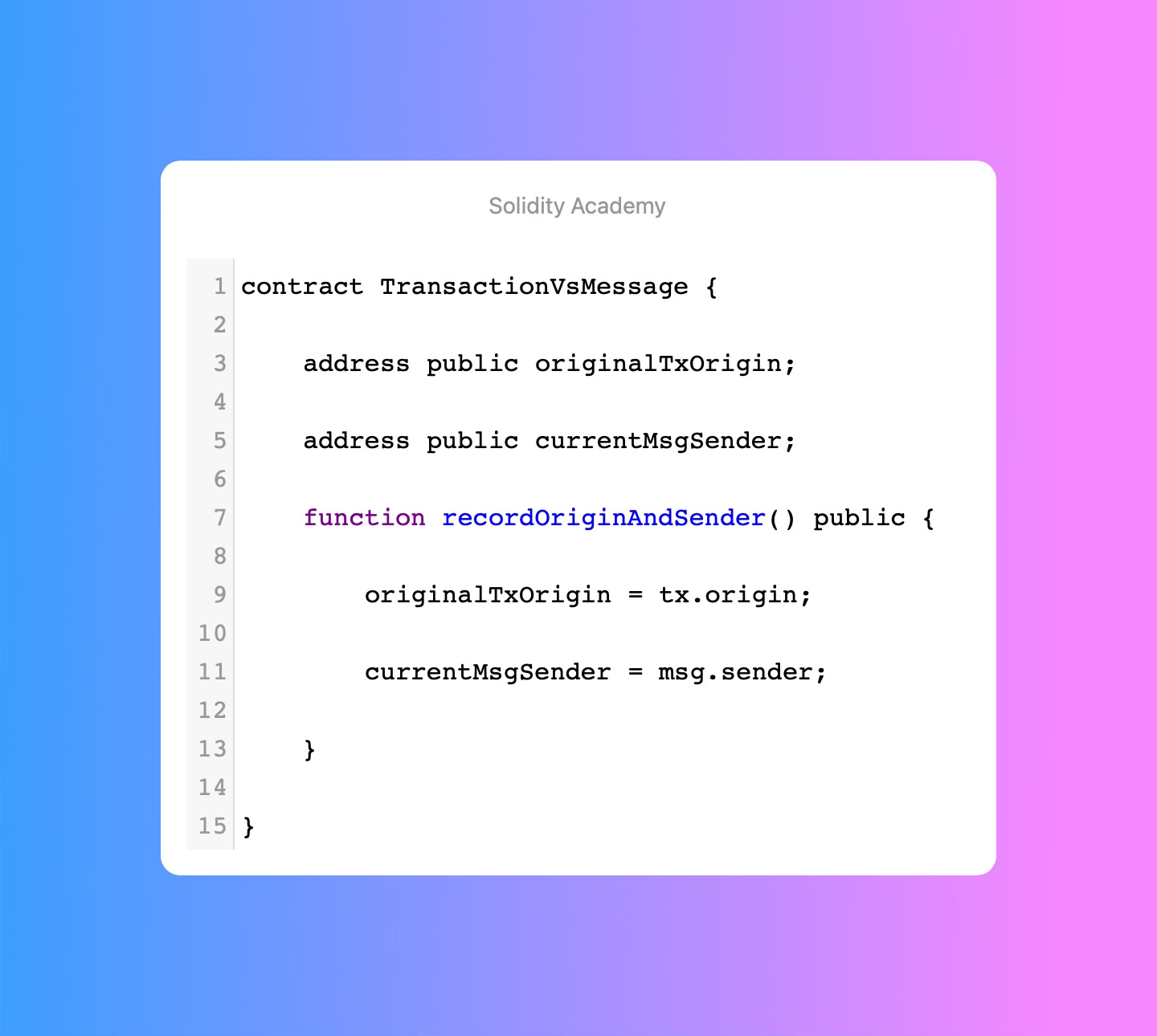Unraveling Solidity Mysteries: Demystifying tx.origin and msg.sender 🚀
#100DaysOfSolidityInterview : What is the difference between tx.origin and msg.sender?
🎉 Greetings Solidity Enthusiasts! 🎉
Welcome back to another intriguing edition of our #100DaysOfSolidityInterview series, where we dive deep into the heart of Solidity, uncovering its secrets, and preparing you for the challenges that may come your way in the world of blockchain development.
Today, we're delving into a question that often leaves developers scratching their heads: "What is the difference between tx.origin and msg.sender?" Buckle up, as we embark on a journey through the nuances of these two essential components in Solidity.

Understanding tx.origin and msg.sender:
🤔 The Conundrum Unveiled: tx.origin vs. msg.sender
In Solidity, both `tx.origin` and `msg.sender` play crucial roles in determining the source of a transaction. However, their functions and use cases are distinct.
1. `tx.origin`: The Original Instigator
`tx.origin` refers to the Ethereum address that initially triggered the entire transaction. Imagine it as the original caller, the one who set the wheels in motion. This could be an externally owned account (EOA) or a contract.
In this example, the `recordOrigin` function stores the address of the entity that initiated the transaction in the `originalCaller` variable.
2. `msg.sender`: The Current Player
On the other hand, `msg.sender` identifies the address of the current caller, irrespective of whether it's a contract or an EOA. It reflects the entity that is currently interacting with the contract.
Here, `recordSender` captures the address of the current caller in the `currentCaller` variable.
✨ Illustrating with Smart Contracts: Putting Theory into Practice
To truly grasp the disparity between `tx.origin` and `msg.sender`, let's explore a practical example:
In this contract, the `recordOriginAndSender` function captures both the original instigator (`tx.origin`) and the current player (`msg.sender`). Deploy this contract and call the function, and you'll witness the disparity between the two.
Conclusion:
🌟 Wrapping it Up: Understanding the Essence
In conclusion, while `tx.origin` traces back to the original source that initiated the transaction, `msg.sender` points to the current entity interacting with the contract. It's crucial to choose the right tool for the job, considering the security implications of each.
In summary, always be mindful of who initiated the transaction and who the current player is. Solidity, with its intricacies, rewards those who delve deep into its workings, and understanding the nuances between `tx.origin` and `msg.sender` is a giant leap toward mastering this powerful language.
🚀 Spread the Knowledge: Share Our Newsletter!
Knowledge is best when shared! If you found this newsletter insightful, don't keep it to yourself. Share it with your fellow Solidity enthusiasts, blockchain developers, and anyone eager to unravel the mysteries of smart contract development. Let's build a community where knowledge flows freely!
Stay tuned for more Solidity gems in the upcoming editions of our #100DaysOfSolidityInterview series. Happy coding! 💻🌐
---
👉 Don't forget to share this newsletter with your network and help us reach more aspiring Solidity developers! 🚀
Follow us on Twitter | Medium | Substack | #100DaysOfSolidity
Got feedback or story ideas? Reach out to us at http://linktr.ee/solidity101




